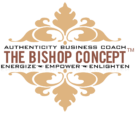DEI programs are becoming increasingly visible in workplaces and businesses as people and
organizations are learning the program’s value. Building a DEI program can often appear to
be a challenging journey.
For the purposes of this message, we’ll discuss DEI and how to create a successful DEI
program in your organization.
What is a DEI Program?
DEI-or diversity, equity, and inclusion have become an increasingly prominent workplace
issue. DEI consists of three elements: diversity, equity, and inclusion.
Workplace diversity is the inclusion of employees with different cultural, physiological, and
social characteristics, including gender, race, nationality, age, and level of education. Even
though organizations may be diversified, people aren’t.
DEI primarily consists of guidelines, plans, and methods that allow all employees to work
together. According to a good inclusion plan, the members of your diverse community
should feel welcomed, appreciated, and respected.
In reality, equity and equality are two very different concepts. While equity recognizes each
individual’s needs, equality ensures that everyone gets the same treatment. Diversity and
inclusion at work ensure that everyone shares in the goals and priorities of diversity and inclusion.
How To Run a Successful DEI Program (5 steps)
Describe Diversity To Your Organization
The first step toward a perfect remedy is to identify the issue. According to our definition,
diversity refers to a group of people who have diverse characteristics. Because there are so
many different sorts of differences globally, it’s critical to figure out which ones are
important in your company. First, analyze your data. If you don’t have any data yet, now is
an excellent time to start gathering information so you can get a sense of your goals.
Also, ensure that your workforce gives you both qualitative and quantitative data.
Find out what they care about and how they’d like to see the workplace transformed. Also,
make contact with anyone who might be against diversity. Once you’ve identified the
hurdles to your DEI efforts, you may start looking for solutions to get around them.
Review Your Policies, Programs, and Procedures
You must ensure that your DEI aims and goals are carried throughout your firm after you’ve
identified them. Company policies, internal referral programs and applications work
differently in each department. Believe it or not, these dynamics can help DEI development
projects succeed. As a result, you will be better equipped to address concerns, challenges
and issues with data, metrics and milestones.
Start with a review of your current practices, programs, and activities. In conjunction with
your HR teams, make a list of your principles, plans, and procedures. Next, examine each
item to see if it supports or affects your DEI goals.
Modify Your Current Policies, Programs, and Procedures
You should examine and revise current regulations, plans, and practices as soon as your
inspection is over. It’s critical to include your DEI objectives in every employee document.
One example is modifying the language in a policy to make it more inclusive. Just be mindful,
the goal is to be more inclusive, not reinvent the wheel completely.
Resolve Any Unresolved Issues
Identify any gaps after you’ve altered your current plans and practices.
Adapting your DEI rules, processes, and activities may be necessary to meet your objectives
and priorities.
Be Accountable For Your Actions
Be clear about all your efforts in order to ensure success with your DEI strategy.
Regularly update your team and executive leadership on your progress. Inform the acquiring
workforce of your goals. Ensure that your DEI projects remain collaborative with the rest of
the organization, so they do not become isolated.
Final Thought
The purpose of this article is to provide an overview of DEI and how you might develop a DEI
strategy for the company. We hope that even though these are only a few of the first steps,
they help you understand DEI and the steps you can take to develop your own approach.

